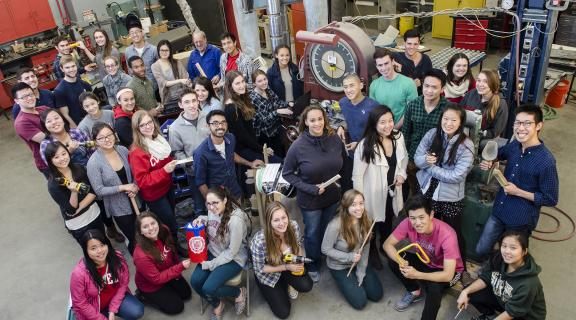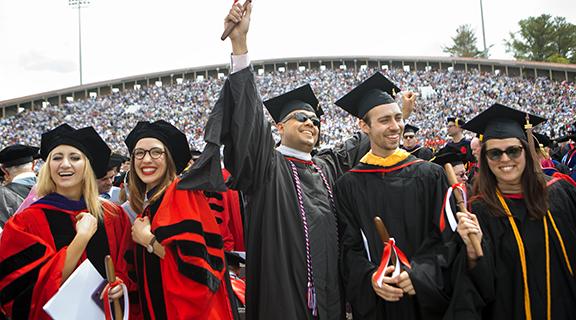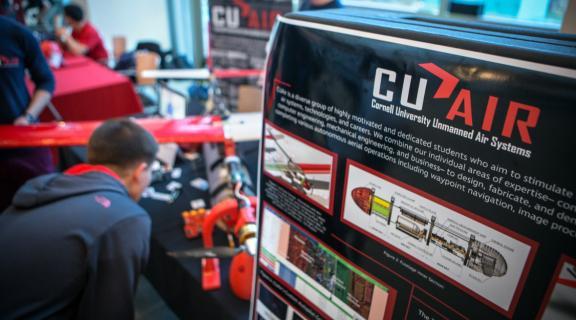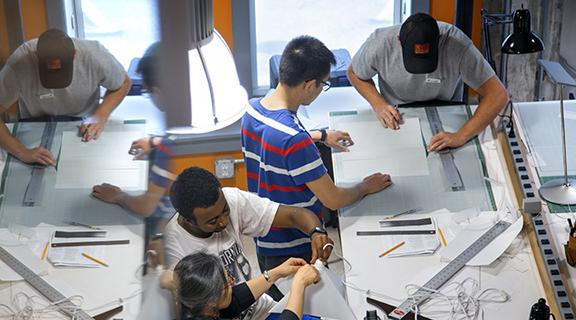
Admissions
Why Cornell Engineering?
"Scientists study the world as it is; engineers create the world that never has been."—Theodore von Karman
Cornell engineers challenge the status quo and do great things. Steeped in an environment of questioning, and with a focus on innovation, Cornell Engineering pursues excellence in all areas. Its faculty, students, and alumni design, build, and test products, improve the world of medicine, inform and shape our laws, create and drive businesses, become research luminaries, and overcome real and perceived barriers to achieve scientific breakthroughs that advance the quality of life on our planet.
We invite you to learn more about Cornell Engineering and its programs.
Did you know?
The name "Big Red Bear" originated in 1916, when the Cornell varsity football team collected $25 to buy a black bear cub, which they named Touchdown, to serve as a mascot. Cornell's varsity teams are actually nicknamed simply "the Big Red."
Charles Ward Hall (B.S., 1895) pioneered aluminum manufacturing procedures and tools in building aircraft. He developed the idea and tools to join duralumin – aircraft aluminum alloy skin – using cold-set rivets. This quickly revolutionized the manufacturing process and helped reduce drag.
In 1974, Prof. Jack Blakely and his MSE students were first in the world to synthesize a single layer of graphene (a very thin, nearly transparent sheet, one atom thick) and determine its structure. Their method is the same used today by industries to make meter-sized sheets of graphene.
HC Torng (M.S. 1958, PhD. 1960) owns a patent for one of the key technologies which formed the foundation for many modern high-performance processors. The patent was first granted in 1989 to Cornell Research Foundation, covering a technique invented by HC Torng which enables microprocessors to increase processing speed by determining which instructions are not dependent on the results of others. This then allows the processor to execute those out of order, and more instructions to be executed during the same computer clock cycle.
The 1968 paper by Al Blumstein (OR PhD), “National program of research, development, test, and evaluation on law enforcement and criminal justice” introduced a quantitative modeling element to the study of criminal justice, thereby widening the scope of the methodology of operations research in this new direction.








